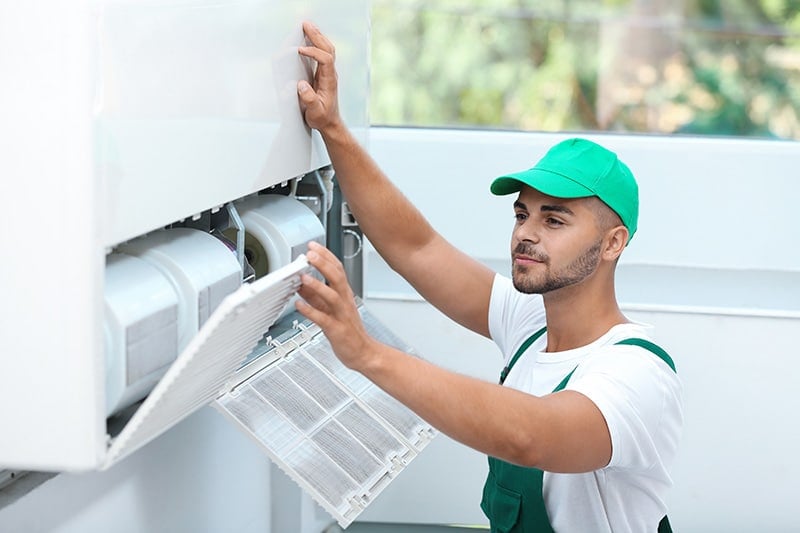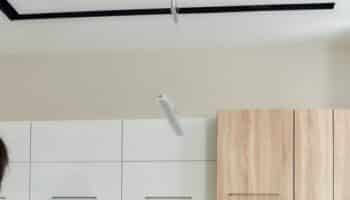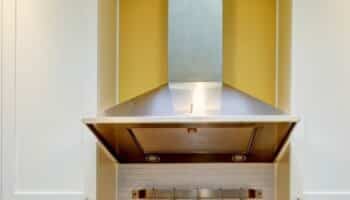Is there a lot of condensation on your range hood, and you’re unsure why?
That sucks! But you might find comfort in knowing that thousands of homeowners all over the world face the same issue daily, so you’re not alone.
I understand how annoying it can be to have tons of condensation in your range hood – especially when you need to cook something you know will create a lot of smoke or leave lingering smells in the kitchen. Luckily, you’ve come to the right place for answers. Below, you’ll find a list including 6 of the most common causes behind excess range hood condensation and what you can do about it.
When there’s tons of condensation in your range hood, it can be due to infrequent use, cool kitchen temperatures, inadequate ventilation, and filter saturation. Excess condensation can also appear due to a bad exhaust system and improper installation of the range hood.
Read on to keep condensation away from your range hood!
Why There’s Tons of Condensation on Your Range Hood
There’s no single answer to explain why there’s tons of condensation on your range hood, as many elements can be at play when a situation like this arises. However, from what I’ve seen over the years, there are some elements that are more likely to blame than others.
To help you save time, effort, and money, I’ve prepared the causes that, in my opinion, are typically responsible for excess range hood condensation. Please ensure to read them carefully and follow the steps provided as closely as possible.
#1 Infrequent Use
Let’s start by talking about how often you use your range hood, as it can help explain why there’s excess condensation present on it.
Although it’s not necessary to use your range hood every day, it’s important that you turn it on a couple of minutes before you cook and leave it on a couple of minutes after you’re done. By keeping the appliance on after you’re done cooking, you’ll ensure that all excess moisture in the air has been pulled into the hood and exhausted properly.
It’s also important that you try to activate the appliance at least twice per week to keep everything inside it running smoothly.
Solution: My usual advice is to leave the range hood on for anywhere between 10-15 minutes after you’ve finished cooking. A short 15-minute period is usually more than enough to guarantee all moist air has been removed properly.
#2 Cool Kitchen Temperatures
The next possible reason why there’s tons of condensation from your range hood is that the cool temperatures in your kitchen are causing an imbalance.
If you live in an area that’s very cold and don’t have the right heating solutions for your kitchen, condensation can appear on your range hood as you cook. If you think about it, it makes a lot of sense. The rest of your kitchen is very cold, but right beneath the range hood, you have boiling pots and pans with heat rising directly into the appliance.
The temperature imbalance can happen very quickly and cause tons of condensation to form on your range hood.
Solution: I find that improving the heating solutions in your kitchen can go a long way in preventing the formation of excess condensation on your range hood. Try adding a small space heater to your kitchen to level out the temperature and see if that works.
Note: Excess range hood condensation resulting from a cold kitchen isn’t necessarily dangerous or bad for your appliance, so there’s no real need to address it. The heater solution is only a suggestion in case you can’t stand the condensation, but it’s completely optional!
#3 Inadequate Ventilation
Inadequate ventilation can also be to blame when there’s tons of condensation on your range hood. As you may know, range hoods rely on airflow created by a fan inside them to pull in air from your kitchen and blow it through their ducts and to the outside world.
When proper airflow is affected, your range hood won’t be able to dispose of warm, moist air as effectively, leading to several issues and condensation pooling. Airflow can be affected for several reasons, including an obstructed grease filter, a damaged fan motor, dry motor bearings, a blown fuse, and more.
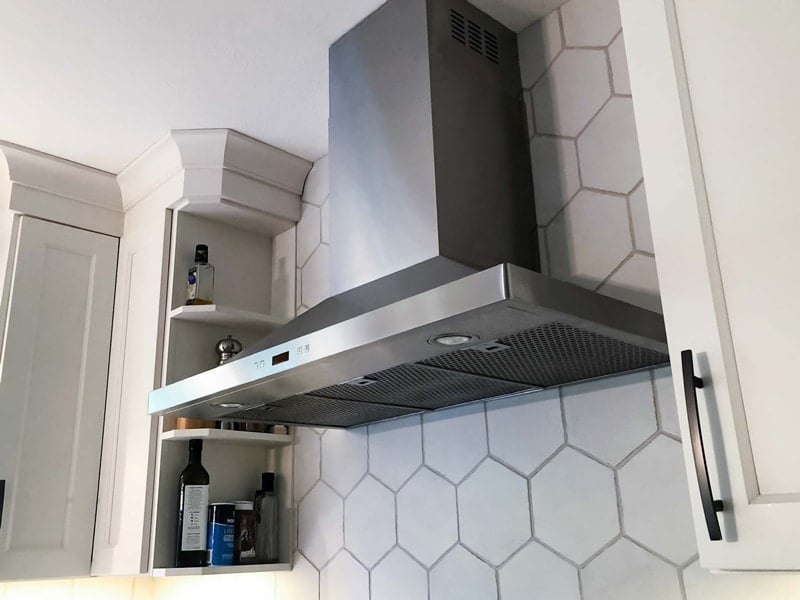
Solution: My usual advice is to check the range hood thoroughly to ensure airflow is not being affected. I’ll go into more depth about cleaning the grease filter in the next section. For now, let’s focus on checking the fan, the motor’s bearings, and the fuse.
- Cut power to your kitchen from your circuit breakers.
- Remove the range hood’s grease filter.
- Look inside the range hood’s cavity to spot screws to undo and access the appliance’s internal components. The exact process varies from model to model, so please refer to your User Manual for the right instructions. If you no longer have the manual, you can check out our free resource below.
- Once you have clear access to the fuse, the fan, and the fan motor, test the fuse using a multimeter.
- If the fuse is okay, check that the fan is neither damaged nor scrapping against the surrounding walls.
- Lastly, access the motor’s bearings and add lubricant if needed.
While your range hood can seem to work with dry bearings and an obstructed fan, it won’t work if the fuse is blown. So, if, on top of the excess condensation, you notice the range hood doesn’t even turn on anymore, there’s a good chance the fuse is to blame.
#4 Filter Saturation
Your range hood’s grease filters are key to ensuring the appliance removes unwanted smoke particles and smells, as well as excess condensation.
We’ve all been guilty at some point of not giving our home appliances the maintenance they need. However, with some appliances, forgetfulness can be more costly than for others. If you don’t clean your range hood’s grease filters frequently and replace them when needed, you’re sure to face condensation issues, poor airflow, and even short circuits and blown fuses.
A clean grease filter will let enough air into the range hood to remove excess smoke and unwanted smells, as well as to get rid of the moisture coming from your pots and pans as you cook, so please try to keep a close eye on the condition of your filter.
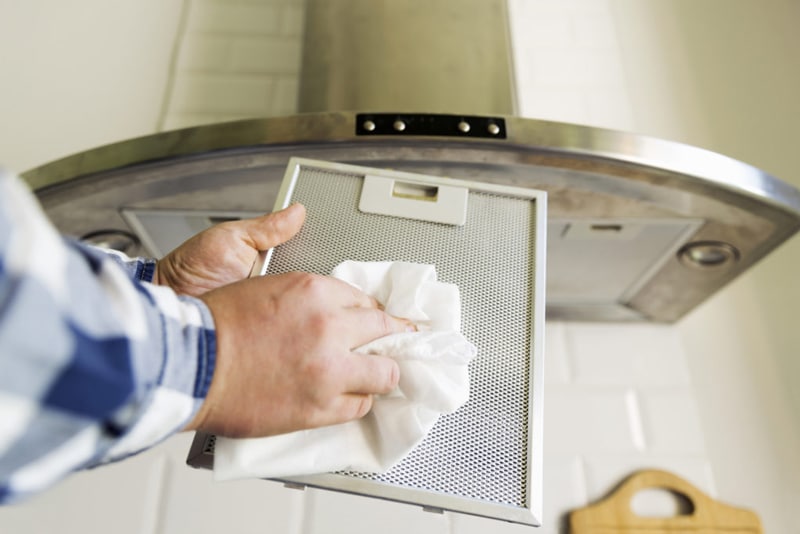
Solution: In my experience, you can safely remove your range hood’s grease filters and clean them out with water and soap at least once monthly. However, I recommend you replace the filters entirely every year or even more often if you cook every day.
#5 A Bad Exhaust System
A bad exhaust system can also cause tons of condensation coming from your range hood. As mentioned earlier, proper airflow is key when it comes to disposing of smoke and unwanted smells that originate during the cooking process. And the same goes for condensation and excess moisture.
When air is pulled in from your kitchen into your range hood, it gets thrown out to the outside world through the duct system installed in your home. However, when there’s an obstruction in the system caused by built-up grease or any other object, properly exhausting the pulled-in air can be challenging, causing excess condensation.
Solution: If you’ve already ensured the fan and the motor are working normally, there’s a good chance the problem does lie with the ventilation system and the duct layout. Since checking the duct layout is complex and requires a special skill set, I strongly recommend you call a technician for help and let them check.
#6 Improper Installation
The last possible reason why there’s tons of condensation coming from your range hood is that the appliance or its ventilation system is not properly installed.
Throughout this article, we’ve discussed several potential reasons why there’s excess condensation in your appliance, starting from simpler elements to more complex ones.
Now that you’ve ensured the fan, the motor, and the grease filters are not to blame, my usual advice is to check that the duct and ventilation system are tightly placed and that there are no gaps or holes in the system that could be letting air currents in or out, thus causing improper airflow and condensation.
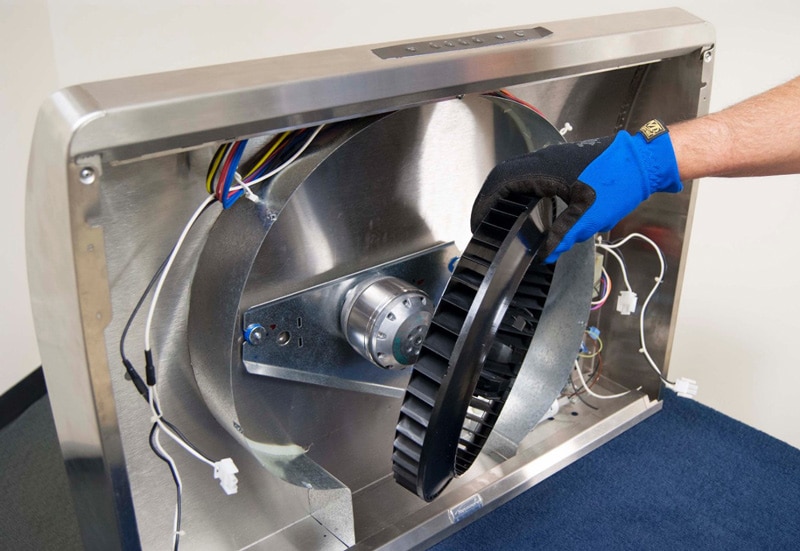
Solution: Look closely at your range hood and try to hear vibrations that can indicate a panel or screw is loose. If you spot anything that needs tightening, go ahead and tighten it – just make sure you’ve cut power to the appliance from your circuit breakers first to avoid the risk of electrocution.
Provided you’re unsure about the process or don’t feel like doing the checking yourself, there’s no shame in contacting a professional for help.
Since contractors usually handle a range hood’s installation, you can try contacting whoever installed yours and tell them about the problem. Chances are that if the contractors made a mistake during installation, they’ll come to your home and correct it free of charge.
Fixing Excess Condensation From Your Range Hood
That about covers it!
When there’s tons of condensation from your range hood, it’s natural that you feel frustrated and worried about what it means and even a possible short circuit.
Luckily, as I hope this piece has helped you better understand, addressing the most common causes behind a range hood with tons of condensation can be easy and quick. More often than not, something simple, like balancing the temperature in your kitchen and ensuring your grease filters are clean and unobstructed, will do the trick.
Thanks for reading. If this article was useful and answered your most burning questions, please check out our other resources and free guides below and consider subscribing to our newsletter.
Have a wonderful day!
-Craig.


